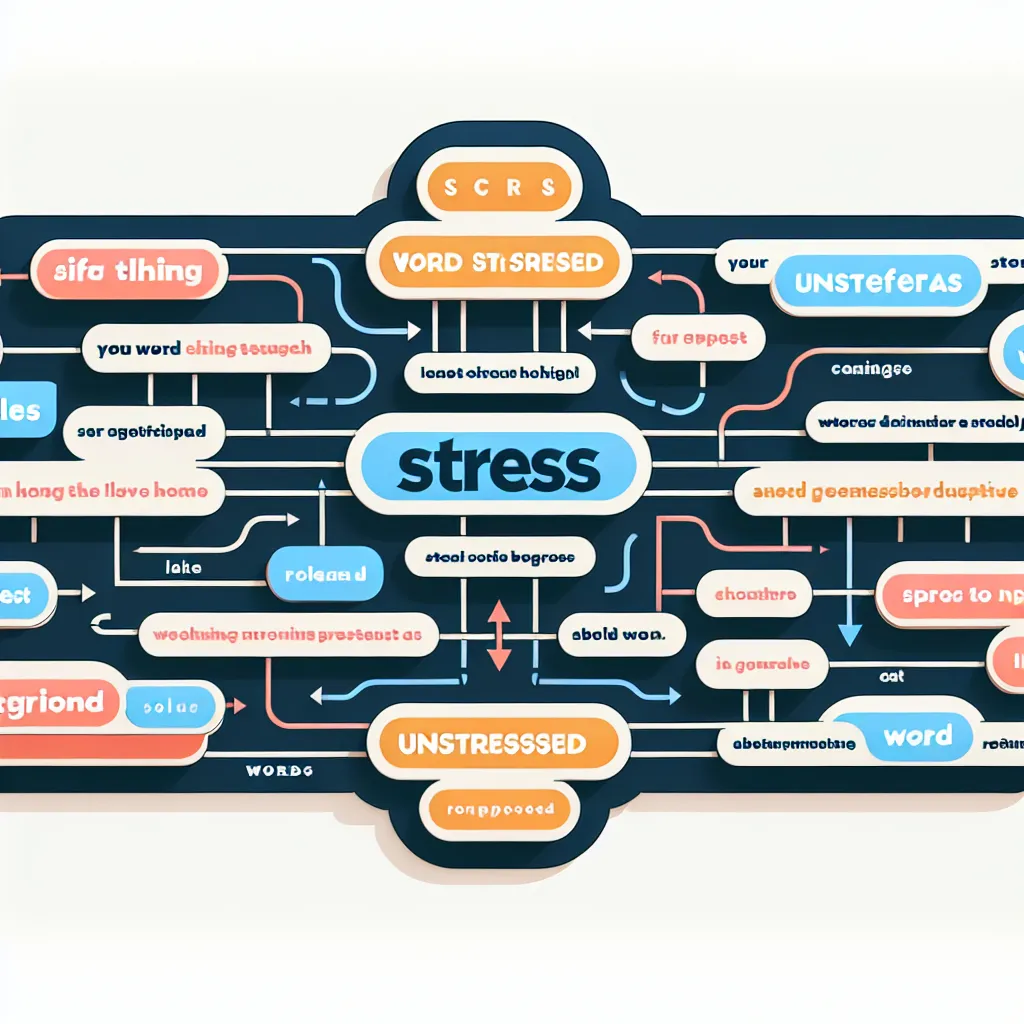Mastering stress and intonation is crucial for effective communication in English. These elements not only help you sound more natural but also convey meaning and emotion in your speech. In this comprehensive guide, we’ll explore How To Use Stress And Intonation In English, providing you with practical tips and exercises to improve your pronunciation skills.
Understanding Stress and Intonation in English
What is Stress?
In English, stress refers to the emphasis placed on certain syllables or words within a sentence. Stressed syllables are pronounced louder, longer, and with a higher pitch than unstressed syllables. Understanding and applying stress correctly can significantly improve your English pronunciation and comprehension.
 English Word Stress
English Word Stress
What is Intonation?
Intonation is the rise and fall of voice pitch in speech. It’s the melody of the language that conveys meaning beyond the words themselves. Proper intonation helps express emotions, attitudes, and can even change the meaning of a sentence.
The Importance of Stress and Intonation
Using correct stress and intonation is essential for several reasons:
- Clarity: It helps listeners understand your message more easily.
- Meaning: It can change the meaning of words and sentences.
- Naturalness: It makes your speech sound more native-like.
- Emotion: It conveys feelings and attitudes.
How to Use Word Stress in English
Rules for Word Stress
-
Two-syllable nouns and adjectives: Stress is usually on the first syllable.
Example: TAble, HAPpy -
Two-syllable verbs: Stress is often on the second syllable.
Example: conTROL, deCIDE -
Words ending in -tion, -sion, -cian: Stress the syllable before the suffix.
Example: eduCAtion, teleVIsion, musiCIAN -
Compound nouns: Stress the first word.
Example: BLACKboard, FOOTball
Practicing Word Stress
To improve your word stress, try these exercises:
- Clap or tap the stressed syllables while speaking.
- Use a dictionary to check stress patterns and practice them.
- Listen to native speakers and imitate their stress patterns.
For more detailed exercises, check out our article on best exercises for English pronunciation.
How to Use Sentence Stress in English
Rules for Sentence Stress
- Content words (nouns, verbs, adjectives, adverbs) are usually stressed.
- Function words (articles, prepositions, pronouns) are usually unstressed.
Example: The CAT is on the MAT.
 Sentence Stress Example
Sentence Stress Example
Practicing Sentence Stress
- Read sentences aloud, exaggerating the stressed words.
- Record yourself speaking and analyze your stress patterns.
- Practice with tongue twisters that focus on stress.
Using Intonation in English
Types of Intonation Patterns
-
Falling intonation: Used for statements, commands, wh-questions.
Example: It’s RAINing. (voice goes down on “raining”) -
Rising intonation: Used for yes/no questions, expressing surprise or disbelief.
Example: Are you SURE? (voice goes up on “sure”) -
Fall-rise intonation: Used for uncertainty, polite requests.
Example: I MIGHT go. (voice goes down then up on “might”)
Practicing Intonation
- Mimic intonation patterns from movies or TV shows.
- Practice asking questions with rising intonation.
- Use exaggerated intonation when reading dialogues.
For more tips on developing a natural accent, visit our article on how to develop a natural English accent.
Common Mistakes in Stress and Intonation
- Stressing every word in a sentence.
- Using a flat intonation throughout speech.
- Misplacing stress in longer words.
- Failing to use rising intonation for yes/no questions.
To avoid these mistakes, focus on listening carefully to native speakers and practicing regularly. Our guide on strategies for reducing pronunciation errors can provide further assistance.
The International Phonetic Alphabet (IPA) and Commonly Mispronounced Words
Understanding the International Phonetic Alphabet can greatly aid in mastering stress and intonation. Here are 10 commonly mispronounced words related to stress and intonation, along with their correct pronunciations:
- Intonation: /ˌɪntəˈneɪʃən/
- Emphasis: /ˈɛmfəsɪs/
- Syllable: /ˈsɪləbəl/
- Rhythm: /ˈrɪðəm/
- Cadence: /ˈkeɪdəns/
- Accentuate: /əkˈsɛntʃueɪt/
- Articulate: /ɑːˈtɪkjuleɪt/
- Pronunciation: /prəˌnʌnsiˈeɪʃən/
- Inflection: /ɪnˈflɛkʃən/
- Enunciate: /ɪˈnʌnsieɪt/
Practice these words regularly, paying close attention to their stress patterns and intonation.
Conclusion
Mastering stress and intonation in English is a journey that requires consistent practice and attention. By understanding the rules, practicing regularly, and being mindful of common mistakes, you can significantly improve your English pronunciation. Remember, the key is to listen carefully to native speakers and practice, practice, practice!
We encourage you to share your experiences and questions in the comments below. For more resources on improving your English pronunciation, check out our article on how to improve English pronunciation on your own.




